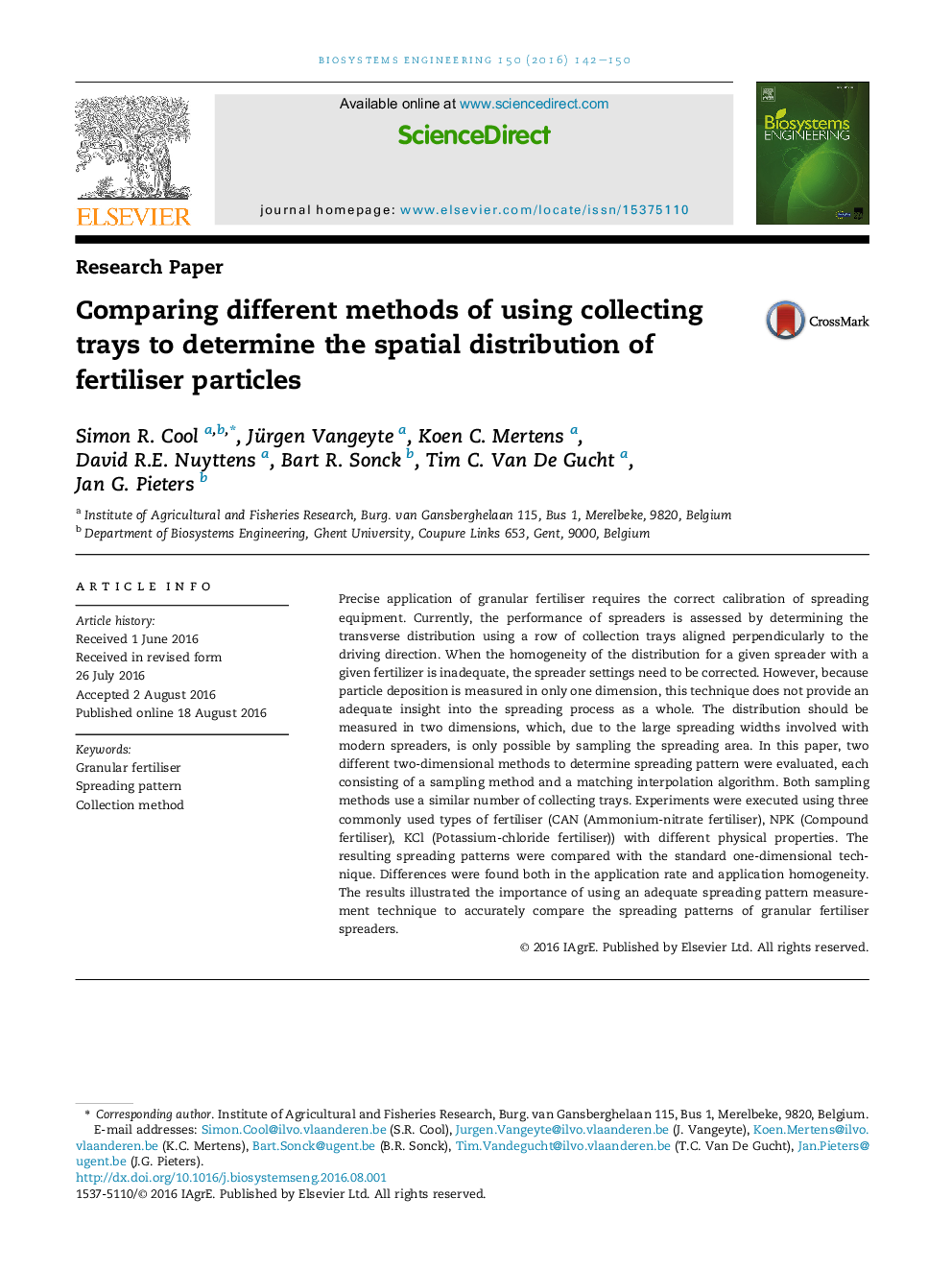| Article ID | Journal | Published Year | Pages | File Type |
|---|---|---|---|---|
| 8055082 | Biosystems Engineering | 2016 | 9 Pages |
Abstract
Precise application of granular fertiliser requires the correct calibration of spreading equipment. Currently, the performance of spreaders is assessed by determining the transverse distribution using a row of collection trays aligned perpendicularly to the driving direction. When the homogeneity of the distribution for a given spreader with a given fertilizer is inadequate, the spreader settings need to be corrected. However, because particle deposition is measured in only one dimension, this technique does not provide an adequate insight into the spreading process as a whole. The distribution should be measured in two dimensions, which, due to the large spreading widths involved with modern spreaders, is only possible by sampling the spreading area. In this paper, two different two-dimensional methods to determine spreading pattern were evaluated, each consisting of a sampling method and a matching interpolation algorithm. Both sampling methods use a similar number of collecting trays. Experiments were executed using three commonly used types of fertiliser (CAN (Ammonium-nitrate fertiliser), NPK (Compound fertiliser), KCl (Potassium-chloride fertiliser)) with different physical properties. The resulting spreading patterns were compared with the standard one-dimensional technique. Differences were found both in the application rate and application homogeneity. The results illustrated the importance of using an adequate spreading pattern measurement technique to accurately compare the spreading patterns of granular fertiliser spreaders.
Keywords
Related Topics
Physical Sciences and Engineering
Engineering
Control and Systems Engineering
Authors
Simon R. Cool, Jürgen Vangeyte, Koen C. Mertens, David R.E. Nuyttens, Bart R. Sonck, Tim C. Van De Gucht, Jan G. Pieters,
